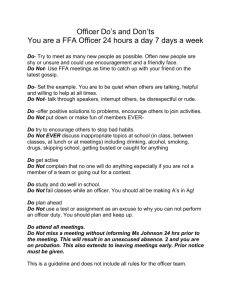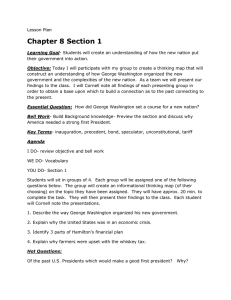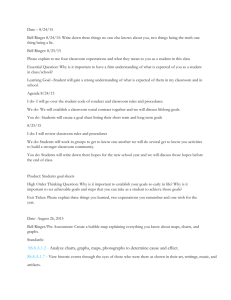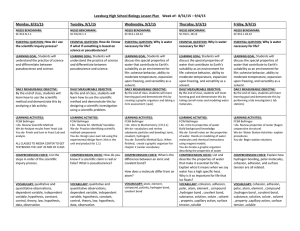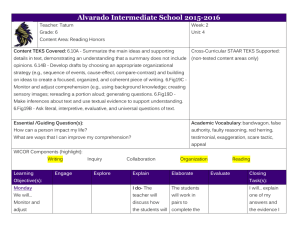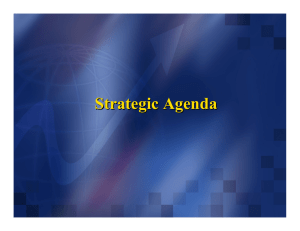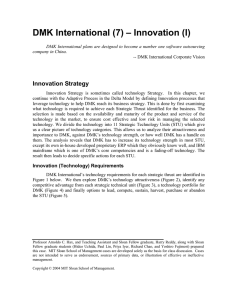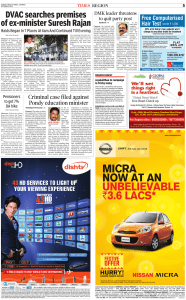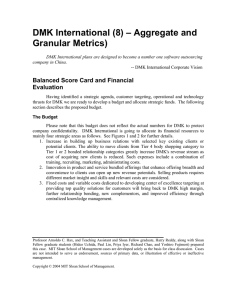DMK International (4) – The Strategic Agenda Strategic Agenda
advertisement
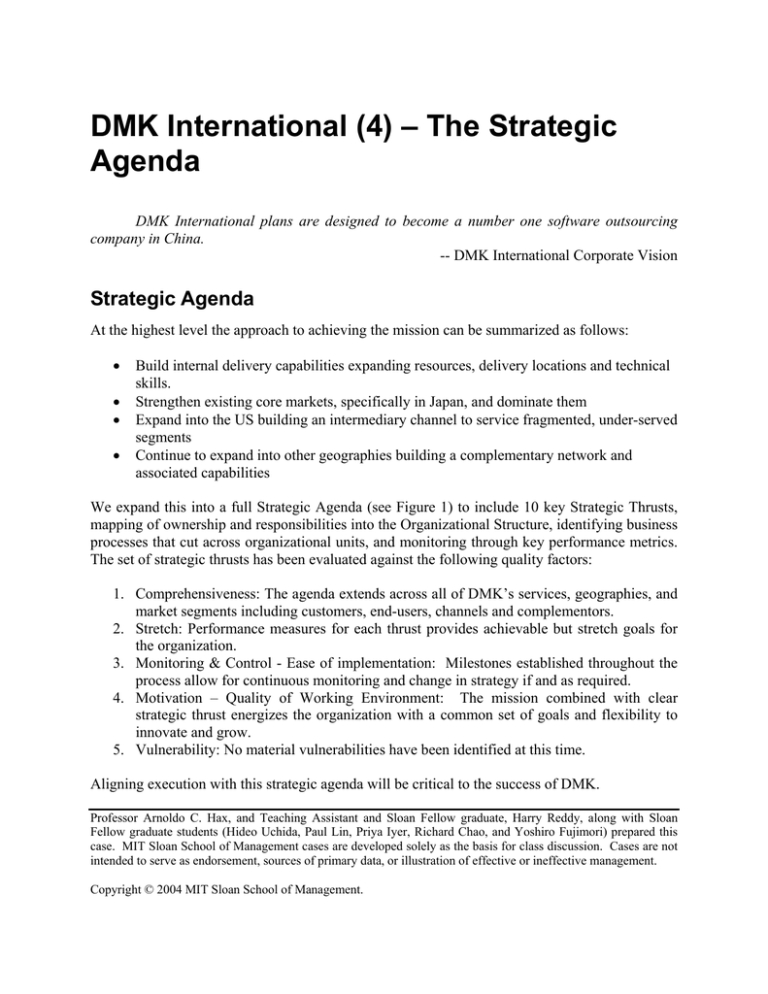
DMK International (4) – The Strategic Agenda DMK International plans are designed to become a number one software outsourcing company in China. -- DMK International Corporate Vision Strategic Agenda At the highest level the approach to achieving the mission can be summarized as follows: • • • • Build internal delivery capabilities expanding resources, delivery locations and technical skills. Strengthen existing core markets, specifically in Japan, and dominate them Expand into the US building an intermediary channel to service fragmented, under-served segments Continue to expand into other geographies building a complementary network and associated capabilities We expand this into a full Strategic Agenda (see Figure 1) to include 10 key Strategic Thrusts, mapping of ownership and responsibilities into the Organizational Structure, identifying business processes that cut across organizational units, and monitoring through key performance metrics. The set of strategic thrusts has been evaluated against the following quality factors: 1. Comprehensiveness: The agenda extends across all of DMK’s services, geographies, and market segments including customers, end-users, channels and complementors. 2. Stretch: Performance measures for each thrust provides achievable but stretch goals for the organization. 3. Monitoring & Control - Ease of implementation: Milestones established throughout the process allow for continuous monitoring and change in strategy if and as required. 4. Motivation – Quality of Working Environment: The mission combined with clear strategic thrust energizes the organization with a common set of goals and flexibility to innovate and grow. 5. Vulnerability: No material vulnerabilities have been identified at this time. Aligning execution with this strategic agenda will be critical to the success of DMK. Professor Arnoldo C. Hax, and Teaching Assistant and Sloan Fellow graduate, Harry Reddy, along with Sloan Fellow graduate students (Hideo Uchida, Paul Lin, Priya Iyer, Richard Chao, and Yoshiro Fujimori) prepared this case. MIT Sloan School of Management cases are developed solely as the basis for class discussion. Cases are not intended to serve as endorsement, sources of primary data, or illustration of effective or ineffective management. Copyright © 2004 MIT Sloan School of Management. Figure1: Strategic Agenda for DMK 1 2 1 1 2 1 2 2 2 1 1 2 1 1 2 1 2 2 1 2 1 1 1 2 2 2 1 2 2 2 2 2 1 2 Businesess Processes 1 VP Mktng VP HR 1 VP Sales VP Operations 2 RP Japan 2 RP China 2 RP US CFO Strategic Thrusts Build Internal Capabilities 1 Invest in people, train and motivate. Hire outstanding talent. Develop strong technical design capabilities. 2 Expand nationally leveraging government programs to develop global delivery centers throughout China. 3 Work with exclusive channel partners to develop horizontal frameworks (portals, content/doc management) and industry specific solution sets (energy, publishing, financial services) for rapid development. Solidify Core Markets 4 Dominate IBM mainframe outsourcing market in Japan through aggressing sales and marketing programs. 5 Strengthen strategic relationships (e.g. IBM, GE, Kawasaki, Unisys) through deep customer understanding/integration and continuous improvement. Build US market 6 Develop strong direct-marketing program to target the intermediary service provider channel. 7 Actively pursue US based Consulting/high-end IT Service firms to become their exclusive provider of design, development, & maintenance services 8 Develop an engagement program with processes to ensure long-term, successful integration of offshore DMK team with local service firm. Expand to other markets 9 Expand to UK and test EU (Germany, France, Italy) using an intermediary partnership network similar to US-strategy. 10 Enter and test the Latin American market (Brazil, Mexico, Chille) also through an intermediary partnership network. CEO Organizational Units 2 OE Attrition, # of recruits, performance 2 OE Growth in GDC, # of employees, utilization, profit margin Decrease in project execution time, increase in client satisfaction, increase in sales competitiveness Performance Measures 2 1 I 1 1 CT Increase in profitable market share OE Increase in client satisfaction, increase in size of relationship and profitability 1 CT High quality sales leads into US based consulting and IT services firms 2 CT Increase in US market share and profitability. # of exclusive partners and projects I Client satisfaction, increase in rev/profits, profitability of client 1 1 2 2 1 1 2 B Increase in UK market share, targeted partners/projects 1 1 2 2 1 1 2 B Targeted relationships/projects in specific geographies
